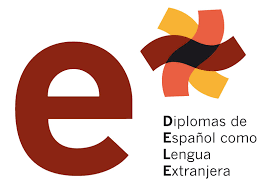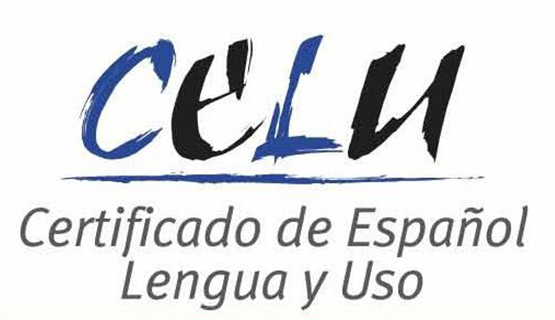
15 Top Spanish Level Tests
Ding! Level up.
Progressing up the levels in a video game gives you something to work toward and makes you feel accomplished.
Wouldn’t it be great if you could apply the idea of leveling up to your Spanish learning?
These tests check your proficiency in Spanish and let you know when your language skills have—ding!—leveled up.
Contents
- Why Should You Test Your Spanish?
- How to Use Spanish Proficiency Tests
- How Are Spanish Level Tests Scored?
- 15 Spanish Level Tests to Take Your Learning to the Next Stage
- What to Do with Your New Spanish Level
- And One More Thing…
Download: This blog post is available as a convenient and portable PDF that you can take anywhere. Click here to get a copy. (Download)
Why Should You Test Your Spanish?
In addition to the simple fun of treating Spanish learning like a video game, there are many other reasons why you would want to test your Spanish skills:
- Know how close you are to fluency. You might just enjoy knowing where your Spanish skills are in general, to check how far you have left to go to full proficiency.
- Put it on your resume. If you want to list Spanish skills on your resume, you should be wary of overstating your knowledge. By taking a Spanish level test, you will be able to tell your potential employer exactly how well you know the language.
- Choose the right course for you. Taking a level test before signing up for a Spanish class can save you a ton of time. It is very easy to sign up for the wrong level course because your either overestimate or underestimate your skill level.
How to Use Spanish Proficiency Tests
It may sound like an expensive and difficult process, but checking your Spanish level can actually be quite painless and absolutely free. Below, we list eight fantastic free tests you can take online right now.
But first, here are some tips to ensure that you take the tests correctly!
- Do not use a dictionary or any other sort of reference while taking the test. It is vital that you do not affect your results by answering questions with the help of a reference.
If you need to look something up, then you don’t know it well enough. Just answer with your best guess and move on.
- Remember to take your time while answering the questions. It is not a race to the finish and a faster time will not help your scores.
- Finally, only take each test one time in order to get an accurate score. Many tests will show you which questions you got wrong.
If you go back and take the test again after seeing the answers, then it does not really count as a valid test of your skills.
How Are Spanish Level Tests Scored?
Most of these resources will provide you with a score on the Common European Framework of Reference. The scores range from A1 to C2.
Beginner:
A1 and A2 show that the speaker has a basic use of the language.
Intermediate:
B1 and B2 indicate that the learner speaks at an intermediate level. B1 is at the threshold and B2 indicates an upper intermediate level.
Advanced:
C1 and C2 are the two highest levels. Both indicate proficiency in Spanish, but C2 shows complete mastery of the language.
15 Spanish Level Tests to Take Your Learning to the Next Stage
Official Spanish Proficiency Tests
If you want to take your knowledge of Spanish to the next level, need that piece of paper that says you are awesome at speaking Spanish or your future boss needs you to have a certificate, there are several official options you can choose from depending on your needs.
There are many pseudo-official Spanish exams, but the official ones are the real deal. Besides, if you are going to spend money on them, at least let’s make sure the certificate you get is valuable.
Here are four of the best-known Spanish official exams you can take. Analyze the characteristics of each of them and choose the one that suits you the most.
In some places, we mention the average prices you can expect from these tests, but please keep in mind that prices are always subject to change.
1. DELE
Overview: The Diploma de Español como Lengua Extranjera (Diploma of Spanish as a Foreign Language) is probably the official exam Spanish learners take most often. The exams are designed and evaluated by the Universidad de Salamanca (Spain), and the Instituto Cervantes is the one in charge of organizing the examination sessions.
The DELE diplomas are divided into six levels (from A1 to C2), and you can take the exams at the level you want, i.e., there is no need to take all the exams from A1 to C2—you can go for C2 right away if you think you are ready.
Pros of taking the DELE exams:
- The diplomas do not have an expiration date. You only need to pass the exams once, and the diploma will be valid and official forever.
- DELE diplomas are accepted worldwide.
- The exams are standardized, so you know from the beginning what you need to know in order to pass each exam.
- All four major language skills (listening, writing, reading and listening) are included in the exams. If you pass the exams for a specific level, you really know you have achieved that level of mastery.
Cons of taking the DELE exams:
- They are not exactly cheap, although it could be worse. The prices range from $120 for the A1 level to $250 for the C2 level.
- You need to keep an eye on the official page and register for the exam in advance, sometimes even two months before the exams take place. The good news is that you know all the exam dates from the beginning of each year.
- You can only take the test in an official Instituto Cervantes center.
2. CELU
Organized by the Ministries of Education and of Foreign Affairs of Argentina, the “Certificate of Spanish: Language and Use” is an internationally acknowledged Spanish proficiency exam any foreigner whose mother language is not Spanish can take. The certificate has no expiration date, and taking the exam costs around $100.
Pros of taking the CELU exams:
- The certificate can be presented as proof of your level of proficiency in Spanish in academic institutions and public and private companies.
- The exams do not include grammar exercises, only writing, listening and speaking activities.
- Spelling errors during the written exam do not lower your final mark!
Cons of taking the CELU exams:
- Although there are plenty of official centers where you can take the exams, there are definitely fewer CELU centers than Institutos Cervantes (for example, in America there are only centers in Argentina and Brazil).
- You need to register for the exam around two months in advance. If you can’t take the exam you registered for, you do not get your money back.
- There are only two levels, Intermediate (B1-B2) and Advanced (C1-C2).
3. ACTFL
The American Council on the Teaching of Foreign Languages has been dedicated to expanding the teaching and learning of languages for decades. It offers a wide range of tests and assessments on several languages (one of which is Spanish), and it is the way to go if you want to assess your level of mastery of Spanish in the USA.
Pros of taking the ACTFL exams:
- The different tests can be taken individually (reading, writing, listening and reading), so you can decide which ones you want to do.
- The exams give you university credits.
- You can take the exams whenever and wherever you want. You make an appointment with a certified tester and then the exam takes place on the phone and/or online!
Cons of taking the ACTFL exams:
- The price. The Speaking exam can cost up to $159. The writing exam costs around $105 and the listening and reading exams cost $50 each.
- Discovering how the ACTFL system really works can be complicated. The website is not user-friendly, and it can take you some time until you find the information you really need.
4. SIELE
SIELE stands for Servicio Internacional de Evaluación de la Lengua Española (Spanish Language International Evaluation Service).
It is promoted by the Instituto Cervantes, the Universidad de Salamanca, the Universidad Autónoma de México and the Universidad de Buenos Aires, so you can be sure of the quality. Besides this, the SIELE Spanish Certificate is recognized and accepted by universities and organizations all around the world.
There are different exam options for you to choose from, each of them including exams in one or more universal language skills (reading, listening, writing and speaking).
Pros of taking the SIELE exams:
- You can choose between the Global exam (four exams on all four language skills) or any of the other five independent modalities.
- You do not have to take all the exams, just the ones you are interested in.
- You choose when and where to take the exam (as long as there is an available date and you go to an official examination center).
- They offer online courses and MOOCs for learners of Spanish who are preparing for the exams.
- The exam takes place in an official center, but it is online!
Cons on taking the SIELE exams:
- The price. Taking the Global exam costs $175, while the independent varieties can cost from $60 to $112.
- The certificates have a validity of only five years.
5. TELC
The European Language Certificates are the certificates you should definitely have if you are planning to study, work and/or live in Europe.
The evaluation criteria are based on the Common European Framework of Reference for Languages (CEFR), and you can take up to 10 different Spanish exams depending on the level you are aiming for (from A1 to B2).
Pros of taking the TELC exams:
- They are officially accepted practically throughout the whole European continent.
- Immigrants can use the certificate in order to prove their knowledge of Spanish, which will ease the citizenship application process in some European countries like Germany or Austria. The certificate also allows you to study at universities and even have access to the work market.
- They offer an online learning platform, study material, coursebooks, mock exams and exam preparation material, among others, all of which you can buy from the online shop.
Cons of taking the TELC exams:
- There are 3,000 examination centers, but they are mainly in Europe, Malaysia and the Philipines.
- Prices are not standardized, to the point that they can vary from center to center even in the same country.
Unofficial Spanish Level Tests
6. Cervantes Escuela Internacional
Length:
Five levels with 53 total questions.
Structure:
The test consists of sentences with missing words, along with multiple-choice answers. It is divided by level; to progress to the next level you need to get at least eight questions correct.
Good to Know:
This test is provided by a very well-known and esteemed Spanish language center, so it is a good place to start. Please note that the results are presented in Spanish—but you should be able to make sense of it from context regardless of your level.
Once you finish the test you will have a chance to review the questions you answered incorrectly. Use this test as a way to figure out what areas of learning you need extra help with.
7. Transparent Language
Length:
Four separate sections with 10-15 questions per section for a total of 150.
Structure:
This test checks your knowledge of grammar (two sections), vocabulary and reading comprehension (one section each). Questions include multiple choice, finding the error in a sentence and choosing the right answer based on short reading passages.
Good to Know:
Be careful not to press the “Restart Test” button on the bottom! It is located dangerously close to the “Next Section” option and will reset your progress if you are not paying attention to where you are clicking.
Completing the test will let you see how many questions you got right overall, but to see the breakdown of each section and which specific questions you answered incorrectly, you will need to sign up with an email address.
8. Bates
Length:
One long section with 50 questions.
Structure:
The test includes 50 multiple choice questions and it focuses on grammar.
Good to know:
Even though you don’t need to sign up anywhere to take the test, at the end of it you will be asked to write your Bates email address, name and surname and Bates ID number. But do not worry! I wrote “Don’t have” in the email address box, my name and last name, and I left the ID field empty. I got my results right away.
Although the test starts with easy questions, it is a rather difficult test. I am a Spanish native speaker who has been a Spanish language teacher for almost 20 years and I hesitated in one question! So if you do not have any previous knowledge of Spanish, this test can really be challenging for you.
When you get your results, you can see the percentage of correct answers and have a look at the ones you answered incorrectly. There are no grammar explanations, though.
9. Tía Tula
Length:
Five tests (A1, A2, B1, B2, C1), with 20-28 questions each. The system recommends spending no more than 15 minutes on each test.
Structure:
Fill-in-the-blanks, multiple-choice questions.
Good to know:
You can choose to take all the tests or just the one(s) you want. If you start in order, you will be able to take the test for the next level only if you pass the previous test. If you do not pass a test, the level of that test is your level of Spanish.
After you finish a test, you can have a look at your answers and see where you made mistakes. The system also gives you the correct answers to the questions you did not answer correctly.
I like this test because it is short and to the point. It is also well written and each level really includes what the learner should know for that level.
10. Akademija Oxford
Length:
The test includes 50 questions. It took me two minutes to do it. My students took an average of seven minutes (14 of my students volunteered).
Structure:
The questions are fill-in-the-blank, multiple-choice.
Good to know:
I found some typos in some questions, but other than that, this is a great test to assess your real level of Spanish. Out of 14 students who volunteered to take the test, 13 were allotted to the level they are actually working on.
The downside of the test is that, in the end, you only get your results and your level of Spanish. There is no way of seeing the questions you answered incorrectly or their correct answers.
11. Oxford House Barcelona
Length:
This test contains 50 questions and can be done in around seven to 10 minutes.
Structure:
All the questions are fill-in-the-blank, multiple-choice questions.
Good to know:
This is definitely my favorite assessment test so far, and my students enjoyed it, too.
The test not only focuses on assessing your grammar, but it also includes questions with expressions, connectors, relatives, conditional sentences, etc.
It is without a doubt one of the most complete and diverse level tests out there.
There is a downside, though. In the end, you only get the number of correct answers and your level of Spanish. There is no way of seeing the questions you had wrong or their correct answers.
12. Battersea Spanish
Length:
This test has six sections, divided into around 20 questions each.
Structure:
Testing consists of fill-in-the-blank questions with multiple-choice options.
Good to Know:
You will need to sign up for this resource, and the results are emailed to you after you finish.
Each question has an “I don’t know” option, so we recommend not guessing if you really do not know an answer. This will ensure more accurate results.
There is also an option to save the test and continue later if you do not have enough time to finish it in one go.
A fun aside: If you live in London (or plan to visit), check out Battersea Spanish’s tango lessons for a great way to meet fellow language learners.
13. Lengalia
Length:
The test is composed of three sections and should take about 20 minutes to complete.
Structure:
In addition to testing grammar and reading, this test has a very unique component: oral comprehension questions.
Good to Know:
Unlike the other tests on our list, this one is not divided into sections. Instead, all types of questions are presented at the same time.
The listening comprehension questions require you to play a brief audio file and choose the correct answer based on what you heard.
Once you complete the test, Lengalia gives you a few suggestions for online courses you can take that are suitable for your level. If you were looking for a good course, check these out!
14. Cambridge Institute
Length:
This is a whopper of a test, with 60 questions.
Structure:
The test is presented as a series of multiple-choice questions.
Good to Know:
The score does not use the Common European Framework of Reference, but it still offers insight into your current level of Spanish.
Some questions are very involved, requiring you to pick nearly or entirely complete sentences from the choices. Others have one-word answers that differ only very slightly. These factors make this a very difficult test to guess on, and therefore a pretty accurate judge of your actual level.
Note that if you leave the page before you finish the test, you will have to start all over again!
This is another test that requires an email address for the results. However, results are received within a few minutes and give you a sense of where you fall in the language-knowledge spectrum.
Unfortunately, the results do not show you what questions you got wrong, so once you have taken the test once, we recommend that you go through it again question by question and study anything you do not know.
15. Language Trainers
Length:
You can choose to take between 10 and 70 questions, in increments of 10. The more questions you answer, the more accurate your results will be.
Structure:
Questions are multiple-choice only.
Good to Know:
The focus is on grammar, but there is some reading comprehension testing as well.
Your score will not be on the Common European Framework of Reference, but will still be useful to know more about your grammar skills.
Once again, choose “I don’t know” if you are not sure—do not guess!
Entering your email when you finish reveals your score right on the same page, along with a list of the questions you got wrong (you will also receive the same information in your inbox).
What to Do with Your New Spanish Level
See how easy that was?
Now that you know where you stand, you can use that knowledge in a variety of ways.
You might try reading a new book in Spanish based your level score, look into an immersion program that suits your level, sign up for an appropriate college class or just focus your studies more so that you can improve your vocabulary and reach the next level.
Knowing your level will also help you choose the right place to start in many online learning programs, including FluentU.
FluentU takes authentic videos—like music videos, movie trailers, news and inspiring talks—and turns them into personalized language learning lessons.
You can try FluentU for free for 2 weeks. Check out the website or download the iOS app or Android app.
P.S. Click here to take advantage of our current sale! (Expires at the end of this month.)

Now that you know what level you are in Spanish, you’ve been given something equally important: a goal to strive for.
See you at the next level!
Download: This blog post is available as a convenient and portable PDF that you can take anywhere. Click here to get a copy. (Download)
And One More Thing…
If you've made it this far that means you probably enjoy learning Spanish with engaging material and will then love FluentU.
Other sites use scripted content. FluentU uses a natural approach that helps you ease into the Spanish language and culture over time. You’ll learn Spanish as it’s actually spoken by real people.
FluentU has a wide variety of videos, as you can see here:

FluentU brings native videos within reach with interactive transcripts. You can tap on any word to look it up instantly. Every definition has examples that have been written to help you understand how the word is used. If you see an interesting word you don’t know, you can add it to a vocab list.

Review a complete interactive transcript under the Dialogue tab, and find words and phrases listed under Vocab.

Learn all the vocabulary in any video with FluentU’s robust learning engine. Swipe left or right to see more examples of the word you’re on.

The best part is that FluentU keeps track of the vocabulary that you’re learning, and gives you extra practice with difficult words. It'll even remind you when it’s time to review what you’ve learned. Every learner has a truly personalized experience, even if they’re learning with the same video.
Start using the FluentU website on your computer or tablet or, better yet, download the FluentU app from the iTunes or Google Play store. Click here to take advantage of our current sale! (Expires at the end of this month.)























